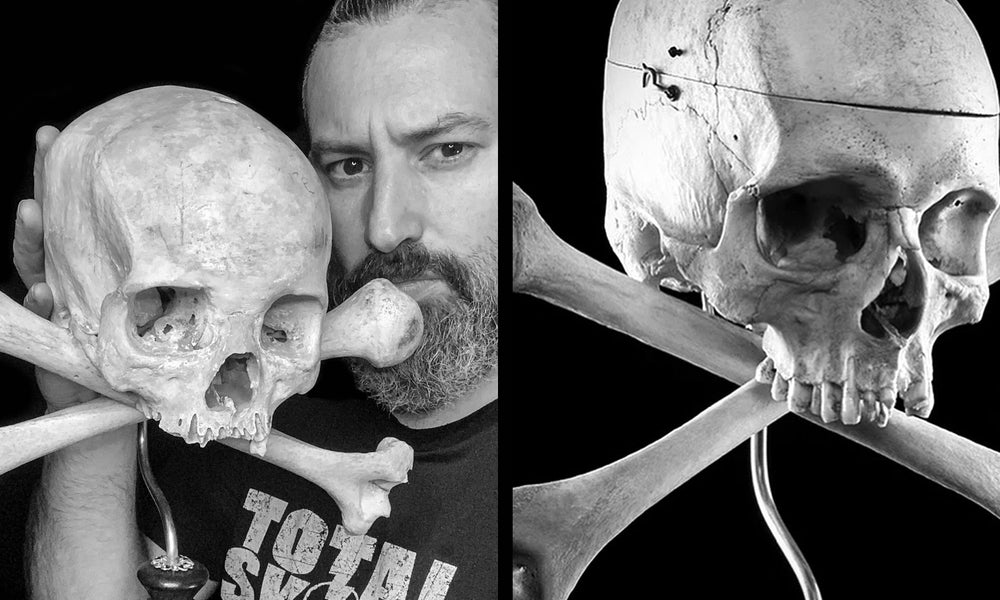Posted on September 28 2023

The skull and crossbones. Such an iconic and well recognized image that has been used to represent death and danger in some form or another throughout history. It commonly comprises a human skull and two femurs, or long bones as they were sometimes referred to, but it can be made up of a human skull and two humerus bones, which is the configuration I like to use in my pieces, since I believe the sizes work better aesthetically; but that’s my opinion.
 Most people who don't know about the history of the skull and crossbones mistakenly think that the symbol originates from the (iconic) golden age of piracy. However, the skull and crossbones as a symbol has been used for much longer and for many different but closely related reasons.
Most people who don't know about the history of the skull and crossbones mistakenly think that the symbol originates from the (iconic) golden age of piracy. However, the skull and crossbones as a symbol has been used for much longer and for many different but closely related reasons. Some of the first recorded uses actually date back well over two thousand years, to the ancient Greeks, according to my research. They are known to have used this image to adorn tombs and gravestones.
Some of the first recorded uses actually date back well over two thousand years, to the ancient Greeks, according to my research. They are known to have used this image to adorn tombs and gravestones.
Another civilization to use the skull and crossbones were the Romans. For them it symbolized death and danger in much the same way as we think of it now.The symbol also shows up throughout the Middle Ages, again as a sign indicating death and danger. Later, during the Victorian period, it appeared as a Memento Mori symbol on tombs and gravestones, and within their jewellery.
The representation of the skull and crossbones that I create in my pieces is meant to be as a Memento Mori. I’ve always loved the macabre relationship the Victorians had with death. It feels like a time in history where death wasn’t so much feared, as accepted and respected. In conclusion the use of the skull and crossbones hasn’t differed too much in its overall meaning for the hundreds of years it’s been around; death, danger, hazard, poison, and this sombre message of Memento Mori. Remember you must die.
In conclusion the use of the skull and crossbones hasn’t differed too much in its overall meaning for the hundreds of years it’s been around; death, danger, hazard, poison, and this sombre message of Memento Mori. Remember you must die.

0 comments